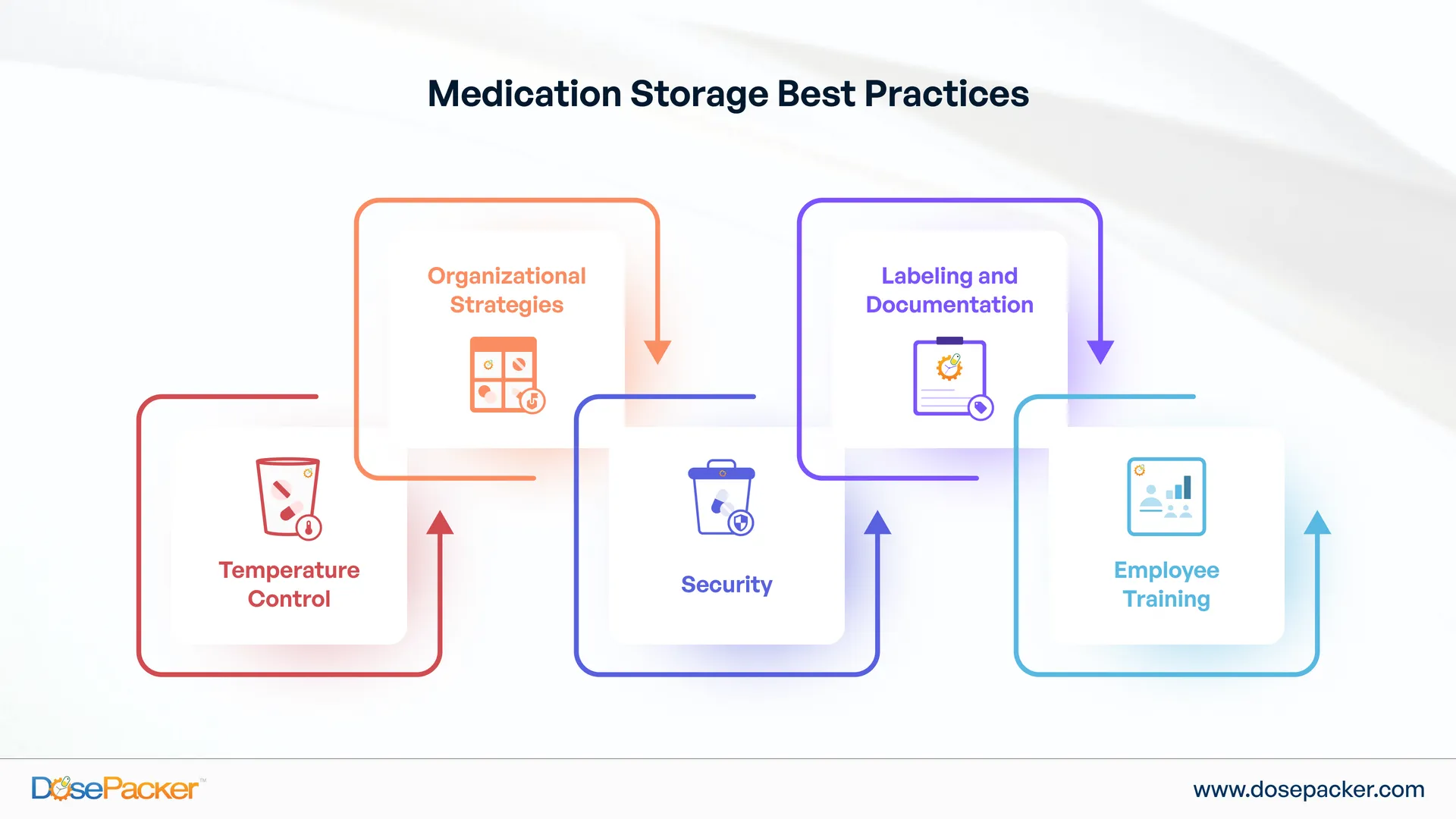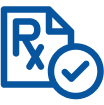Unlock the latest in medication management technology and grow your care community with us.

When it comes to caring for residents, keeping them safe is the number one priority. And one of the simplest yet most crucial ways to do that is Proper Medication Storage. Whether it’s a nursing home, an assisted living facility, or even a home care setting, how medications are stored might be a small step, but it makes all the difference in a resident’s overall health and safety.
Imagine a resident needs a specific medication, but it’s stored incorrectly or mixed up with other resident’s medications. That small mistake could lead to serious consequences. But here’s the good news: following the right medication storage practices can help avoid these risks, ensuring that every dose is safe and effective.
Protect your residents by following these best practices for storing their medications safely and correctly. From simple medication storage ideas to high-tech tools like DosePacker, we’ll help you create a secure space for medication management.
Creating a Safe Space for Medications
Understanding the Risks of Improper Medication Storage
Improper medication storage can lead to serious risks, ranging from medication non-adherence to patient harm. When medications aren’t stored correctly, residents’ safety and treatment effectiveness are compromised. Here are the key risks:
- Medication Errors:
Storing meds incorrectly can lead to mix-ups, use of expired drugs where a resident receives the wrong drug or dosage. This medication errors can cause adverse reactions, delayed treatments, or even worsen the resident’s condition. - Accidental Overdoses:
Improperly labeled or stored medications can result in overdoses, especially in busy care environments. - Compromised Effectiveness:
Medications that require specific conditions (like temperature or moisture control) may lose their effectiveness if stored improperly. - Theft or Misuse:
Poor security measures around medications, particularly controlled substances, can lead to theft or misuse.
Best Practices for Medication Storage

To keep your residents or patients safe, following the best practices when storing medications is essential. Here’s a quick guide to help you get it right:
Temperature Control
- Refrigeration:
Some meds, such as insulin or certain vaccines, must be kept cool from 36°F to 46°F. Ensure you store these medications in a refrigerator with a consistent temperature (between 36°F and 46°F). - Room Temperature:
Other medications must be stored at room temperature, away from heat or humidity. Follow the manufacturer’s guidelines to keep them safe. - Freezing:
Although it is rare, a few medications may require freezing. Always double-check storage requirements to avoid damaging medications.
Organizational Strategies
- Separate by Patient.
Keep medications for each resident in their own section to avoid mix-ups. - Group by Type.
To make things easier to find, organize medications by type (oral, injectable, etc.). - Use Medication Carts.
For easy access and organization, use carts to store and transport medications.
Security
- Locked Storage.
For controlled substances and high-risk medications, use locked cabinets or drawers. Only authorized personnel should have access to these areas. - Access Control.
Limit access to medication storage areas. Keep records of who accessed medications and when, and regularly audit these areas to ensure compliance.
Labeling and Documentation
- Clear Labels.
Mark all medications clearly with the drug name, dosage, and expiration date. This is essential for reducing mix-ups, especially in busy care environments. - Accurate Records.
Keep a detailed log of when medications were received, administered, and disposed of. This will help maintain accurate records and ensure accountability.
Employee Training
- Regular Education.
Make sure all employees understand the best practices for medication storage, including temperature requirements, organization methods, and security protocols. - Ongoing Training.
Implement ongoing training programs to update staff on the latest medication storage guidelines and best practices.
By following these best practices, you can create a safer environment for medication storage, reduce risks, and ensure that residents get the treatment they need. Next, we’ll explore how technology like DosePacker Storage and DoseKart Medication Cart can take medication management and safety to the next level.
DosePacker’s Solutions to Enhance Medication Storage Safety
In today’s fast-paced care settings, relying on manual processes is not always enough. Technology can greatly enhance medication storage efforts and ensure everything is secure, organized, and accurately administered and documented.
- DosePacker Storage.
DosePacker storage is designed to provide organized and easily accessible med-room storage for compliance packs. This storage solution ensures medications are stored in an organized manner, promoting efficient medication administration and minimizing the likelihood of misplaced or expired medications. By switching to a DosePacker pharmacy for your pharmacy services, healthcare facilities can significantly reduce the time staff spend on managing medication orders and med-pass storage operations, up to 85% in some cases. - DoseKart Medication Cart.
This versatile solution is designed to optimize medication administration efficiency in healthcare facilities. The cart includes designated compartments for storing compliance packs and medical accessories and secure boxes to house special medications and controlled substances. Additionally, each cart is equipped with our Smart Vision medication verification system, CareCommunityOS (EMAR), and a scanner for effortless medication administration processing and documentation. - DoseMinder.
This innovative device is crucial in promoting medication adherence and aiding residents in adhering to their prescribed regimens. It also records all medication administrations through video confirmation, ensuring accurate documentation. It is a valuable tool for residents, facilities, and home health services, guaranteeing medication compliance and enhancing overall patient outcomes.
Experience Improved Medication Storage Practices
Prioritizing Safety Through Better Medication Storage
Proper medication storage is key to an individual’s safety. With the right strategies – like maintaining proper temperatures, staying organized, and using DosePacker’s tools – you can reduce risks, simplify processes, and protect your residents.
Now’s the time to review your medication storage practices. Are medications secure, labeled, and tracked? If there’s room for improvement, DosePacker can help you create safer, more efficient systems.
Let’s work together to prioritize medication safety – because every patient or resident deserves the best care.
































